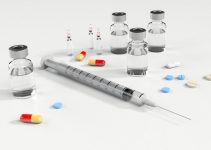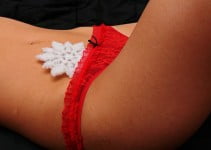It is very important for women to perform breast self-examinations to check for any lumps or changes in their breasts. Adult women are recommended to do this monthly.
Although routine mammography is the ideal screening tool for cancer detection, all women should be familiar with the look and feel of their breasts in order to identify changes easily. Most breast problems are discovered first, often accidentally, by women who are checking themselves.
Breast Self-Exam – How and Why Should You Do It
To examine your breasts, you can start by looking at them in the mirror whilst keeping your arms on the hip area and your shoulders straight.
You are going to want to look and see if your breasts have a usual shape, size, and color, or if they are shaped evenly without any visible swelling or distortion.
If you notice any of the following you should inform your doctor:
- An inverted nipple or one that has changed its position
- Any bulging, wrinkling, or dimpling of the skin
- Swelling, rash, soreness, or redness
For the next step, you should lift your arms and check for the same changes. While still at the mirror, you need to check your nipples for any signs of leaking fluid. This could be a yellow, milky, watery, or bloody fluid.
After that, you should lie down to feel your breasts using your right hand on the left breast and your left hand on the right breast.
Place your hand on your breast with your fingers together in a flat position, and then use the first few finger pads to make a smooth, firm touch.
Do this in a circular motion, around the size of one quarter.
You want to cover your entire breast from the top to the bottom, then from side to side going from the collarbone area to the top of your stomach, and from the armpit area to your cleavage.
It is important to cover the entire breast so it would be a good idea to follow a certain pattern. You could start at the nipple and move in large circles until you get to the outer edge of your breast. In addition, you could move your fingers in a vertical position up and down in rows.
Ensure that you feel all tissue from the front to back. Use some light pressure on the skin as well as the tissue right beneath it, medium pressure on the tissue in the mid-section, and firm pressure on the back area deep tissue.
The final step in the self-exam involves feeling your breasts whilst sitting or standing. For most women, it is easier to feel their breasts when the skin is slippery and wet, so the examination is usually done inside the shower. As noted you should cover the entire breast again and use similar hand movements to the ones described above.
Some Things to Remember:
It will be useful to get help from your doctor or surgeon if you have implants. A professional can easily identify the edges of the breast implants so you know how to detect any changes.
If you are still menstruating, you need to do the exam a few days after the end of your period. Your breasts will be less lumpy and tender at this time. If you pass menopause and you are not menstruating, then the breast self-exam should be done on the same day every month.
Your doctor should be notified as soon as possible if you notice any of these changes which could be possible symptoms and signs of breast cancer.
For the nipple:
- Change in appearance
- Tenderness
- Depressed/inward slightly (retracted)
- Reddened
- Rash
- Scaly
- Discharge of any form
For the breast:
- Mysterious change in the shape or size
- Lumps or a new lump
- Puckering or lumpiness on the skin surface
- Unexplained pain in just one area that is not going away
- Shrinking or swelling that is unexplainable
- Warmth, redness, scaly skin, itching
- Hard lump, thickening, or knot inside the underarm or breast
Get Help from a Healthcare Professional
If you need help, your healthcare professional will show you the right technique to use when doing breast self-examinations. There is no proof that routine breast self-exams has ever helped to lower the deaths caused by breast cancer, or that it is as helpful as a routine mammography screening.
However, the breast self-exams are extremely cost effective and you won’t have to worry about side effects. When tumors are discovered with this technique in the early stage they might not yet be cancerous, the outcome might be better, and cure rates might even be higher.
Overall, you should contact your doctor or healthcare professional as early as possible if you notice any of the above changes in your breasts. Just remember that all changes don’t necessarily mean that you have cancer. For instance, some breast lumps are cancerous or malignant, while others are noncancerous or benign.



